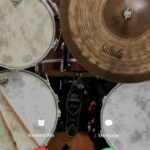Helen Keller’s remarkable journey from a world of silence and darkness to becoming a world-renowned author and activist is a testament to the power of human connection and determination. Central to her transformation was learning to spell, the foundation upon which her ability to communicate and learn was built. This article delves into the methods used by Anne Sullivan, Helen’s teacher, to unlock the world of language for her extraordinary student.
Portrait of Helen Keller as a young girl, with a dog on her lap.
Anne Sullivan’s Arrival: A Turning Point
Anne Sullivan, a recent graduate of the Perkins School for the Blind, arrived at the Keller home in March 1887. Sullivan, who herself had experienced significant vision impairment, understood the challenges Helen faced. Her approach focused on establishing discipline and fostering a loving connection with Helen. Crucially, Sullivan recognized the need to isolate Helen from her family initially, creating a dedicated learning environment in a separate cottage.
Anne Sullivan in 1887.
Manual Alphabet: The Foundation of Spelling
Sullivan’s primary teaching tool was the manual alphabet, a system of hand signs representing letters. She would spell words into Helen’s hand, connecting them to physical objects. One of the first words Sullivan attempted to teach Helen was “doll,” using a doll brought from the Perkins School. While Helen quickly learned to mimic the finger positions, she initially lacked understanding of the connection between the letters and their symbolic meaning.
The Breakthrough: Understanding “Water”
The pivotal moment in Helen’s language acquisition occurred at the water pump. Sullivan placed Helen’s hand under the flowing water and repeatedly spelled “w-a-t-e-r” into her other hand. The sensation of the cool water combined with the consistent spelling triggered a profound realization in Helen. She grasped that the sequence of hand movements represented the object she was experiencing. This breakthrough ignited her understanding of language, and she rapidly learned to associate words with their corresponding objects and actions. By the end of that day, she had learned 30 words.
Helen Keller’s early writing, completed shortly before her seventh birthday.
Beyond Spelling: Reading and Writing
Following her breakthrough at the water pump, Helen’s progress accelerated. She quickly mastered the manual alphabet and braille, enabling her to read and write. Her determination to learn extended to spoken language as well. While she faced challenges with pronunciation throughout her life, she persevered, eventually becoming a prolific writer and public speaker. Helen went on to graduate from Radcliffe College, a remarkable achievement for anyone, let alone a deafblind person. Her autobiography, The Story of My Life, detailed her experiences learning language and overcoming adversity.
A Legacy of Language
Helen Keller’s story is a powerful example of how innovative teaching methods can unlock human potential. Anne Sullivan’s dedication and insightful approach provided Helen with the tools to access language and connect with the world around her. Learning to spell wasn’t merely a skill for Helen; it was the key that opened the door to a life filled with communication, education, and advocacy. Her legacy continues to inspire educators and individuals with disabilities worldwide.
Helen Keller walking with a wounded soldier.
Helen Keller and Polly Thomson in Japan, 1948.
Helen Keller on her 80th birthday.
